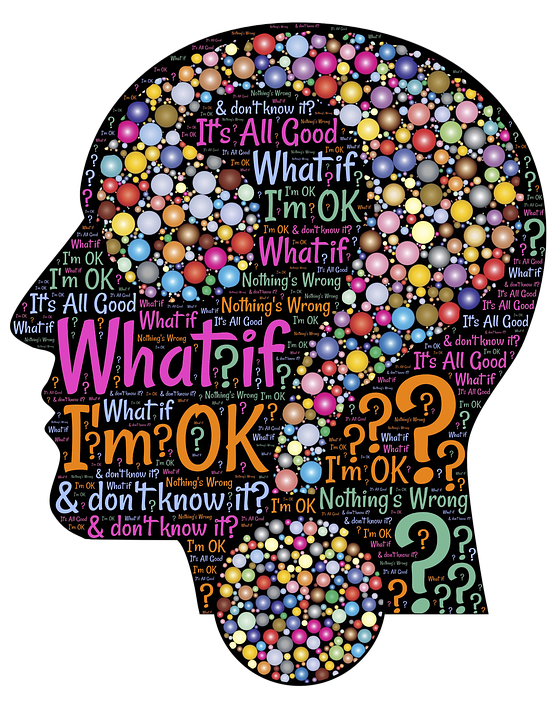
Film studies
Dossier Dossiers
 |
Studi sul
cinema Film studies Dossier Dossiers |
|
Aspettative,
atteggiamenti e strategie: un ponte tra schermo e spettatore E' disponibile una versione pdf di questo Dossier. Quando ci accingiamo a leggere un libro, a guardare un film e persino ad ascoltare un brano musicale, la nostra mente non è mai in posizione neutra: prima ancora di cominciare la visione o l'ascolto, attiviamo, di solito inconsciamente, delle aspettative e degli atteggiamenti riguardo a quello che stiamo per vedere o sentire. |
Expectations, attitudes and strategies: a bridge between
screen and audience A pdf version of this Dossier is available. When we start reading a book, watching a film and even listening to a music piece, our mind is never in a neutral position: even before starting watching or listening, we activate, usually unconsciously, expectations and attitudes towards what we are going to see or hear. |
|
1. Il lettore/spettatore: un agente attivo Le aspettative possono riguardare sia il contenuto (ad esempio, la trama di un film) che la forma in cui il contenuto viene espresso (ad esempio, le convenzioni tipiche di un certo genere di film). Se stiamo per guardare un film "supereroico", possiamo già avere tutta una serie di conoscenze, dovuta alle nostre precedenti esperienze: magari abbiamo già visto un "capitolo" precedente di una "saga", o abbiamo letto il romanzo o il fumetto da cui il film è tratto, oppure conosciamo molto bene l'attore e il suo modo di recitare, e così via. Ma possediamo conoscenze pregresse anche rispetto al genere di film e alle sue particolari convenzioni: sappiamo che il protagonista ha poteri sovrumani, ma vogliamo vedere di che tipo di poteri si tratta; ci aspettiamo che il protagonista abbia dei nemici, contro i quali dovrà lottare, magari vivendo fasi alterne in cui dovrà affrontare dure prove; ci potrà essere una "love story"; e ci aspettiamo comunque che il nostro supereroe risulti alla fine vincitore e abbia risolto un problema complesso, arrivando magari a salvare l'umanità da una catastrofe ... Inoltre, ci aspettiamo che la storia venga narrata in modo piuttosto rapido, con scene "forti" alternate a scene più "distese"; che ci sia un'abbondanza di effetti speciali; che il ritmo diventi sempre più incalzante ... |
 (1) La testa di uno spettatore - non un contenitore vuoto!/The spectator's mind - not an empty vessel!   (2) I generi di film possiedono tipiche convenzioni/Film genres display typical conventions |
1. The reader/spectator: an
active agent Expectations can refer both to the content (for example, a film's plot) and the form through which that content is expressed (for example, the conventions typical of a particular film genre). If we are about to watch a "superhero" film, we may already have a knowledge base built upon our own previous experiences: maybe we have already seen a precvious "chapter" of a "saga", or may have read the novel or comic book on which the film is based, or may know the actor/actress and his/her way of acting very well; and so on. But we also have previous knowledge of the film genre and its particular conventions: we know that the protagonist has super-human powers, but we want to see what her/his powers consist of; we expect the protagonist to have enemies s/he will have to fight against, maybe going through stages during which s/he will have to face trials or difficult experiences; there may be a love story, and in any case, we expect our super-hero to eventually be the winner, having perhaps solved a complex problem, like saving the Earth from an impending catastrophe ... Besides, we expect the story to be told in rather quick succession, with strong scenes alternating with more relaxed scenes; we expect a variety of special effects, and that the rhythm gets more and more pressing as the story reaches its climax ... |
| Strettamenti legati alle aspettative, portiamo alla lettura di un libro o alla visione di un film degli atteggiamenti nei confronti della tematica, dei protagonisti, dell'autore o del regista, degli attori, e via dicendo. Questi atteggiamenti sono convinzioni personali, cioè idee e immagini mentali, fornite di valore: sono cioè reazioni emotive, che ci portano a percepire piacere o dispiacere, a provare accordo o disaccordo, a dare giudizi e valutazioni, ad approvare o disapprovare persone o idee, ad accettare o rifiutare quanto vediamo o ascoltiamo. Prima, durante e dopo la lettura o la visione, la nostra mente è costantemente impegnata a (ri)costruire il significato del libro o del film, ma sempre alla luce delle nostre aspettative e dei nostri atteggiamenti. Capità così di accingerci a vedere un film con curiosità o con scetticismo, di provare reazioni positive o negative durante la visione, di discutere alla fine con amici il senso e il valore che attribuiamo a quanto abbiamo appena visto. |
 (3) Gli atteggiamenti: convinzioni personali fornite di valore/Attitudes: personal valued beliefs |
Strictly linked with expectations, we approach a reading or watching experience with a series of attitudes towards the theme, the characters, the author or director, the actors, and so on. These attitudes are personal beliefs, i.e. ideas and mental images imbued with value: they are affective reactions, which lead us to experience pleasure and sadness, to agree or disagree, to give judgments and evaluations, to approve or diapprove of people and ideas, to accept or refuse what we see or hear. Before, during and after reading or watching, our mind is constantly engaged in (re)building the meaning of the book or film, always in light of our expectations and attitudes. We thus may approach a film with curiosity or skepticism, feel positive or negative reactions while we watch, and at the end discuss with friends the meaning and value we assign to what we have just seen. |
| Insomma, lo spettatore (o il lettore) non è mai un'entità passiva, che si fa "riempire la testa" di immagini e suoni: al contrario, siamo agenti attivi della visione o della lettura, e, attraverso il filtro delle nostre aspettative e dei nostri atteggiamenti, in un certo senso (ri)costruiamo ogni volta il film o il libro, ne forniamo un'interpretazione unica e personalissima - "(ri)creiamo" noi, insieme agli autori dell'opera, una versione sempre nuova e diversa di quello che abbiamo letto o visto. |
 (4) La mente al lavoro per (ri)creare il significato di un film/The mind at work to (re)create a film's meaning |
Thus the spectator (or the reader) is never a passive entity, whose head is filled with input (images and sounds): on the contrary, we are active agents in watching or reading, and, through the filter of our own expectations and attitudes, in a sense (re)build each time the film or the book, providing a very personal, even unique interpretation of it - we (re)create, together with the author of the work, a new and different version of what we have read or seen. |
|
|
||
|
2. Fattori socioculturali, psicologici e situazionali Aspettative e atteggiamenti, pur essendo personali e individuali, sono condizionati da una varietà di fattori. Innanzitutto, pur essendo individui unici e irripetibili, siamo in un certo senso condizionati dalle nostre identità sociali: il sesso, l'età, la posizione economica, la provenienza geografica, la condizione professionale e lavorativa, e così via. A livello più generale, apparteniamo ad una cultura, cioè ad un gruppo di persone che condividono valori, tradizioni, visioni del mondo spesso molto diverse da quelle di altre culture - come le società multiculturali ci stanno oggi dimostrando con grande, e a volte drammatica, evidenza. Questi fattori socioculturali giocano un ruolo importante nel nostro modo di "leggere" un libro o un film. Possiamo ad esempio non capire o magari travisare dei riferimenti o degli eventi a noi non familiari: non è facile rendere l'idea di "ferragosto", con tutte le implicazioni che questa parola possiede per gli italiani, a persone di culture anche non molto lontane dalla nostra. Allo stesso modo, in molte culture occidentali di solito non si fanno domande dirette sull'età del proprio interlocutore; nella cultura cinese, invece, molte persone anziane hanno piacere a sentirsi chiedere quanti anni hanno, perchè possono affermare di avere vissuto una lunga vita e di avere fatto tante esperienze. L'interpretazione di un film è sempre condizionata dalla "visione del mondo" che portano gli spettatori. Dunque la nostre aspettative e i nostri atteggiamenti, lungi dall'essere elementi esclusivamente individuali, sono influenzati da fattori di ordine socio-culturale. Quando ci accingiamo a vedere un film o a leggere un libro, ci può aiutare la consapevolezza che la nostra esperienza è spesso soggetta a condizionamenti: dalla nostra posizione ideologica al nostro status socioculturale, dalla nostra conoscenza o ignoranza rispetto a una certa cultura fino a fattori psicologici e situazionali forse banali, ma che hanno comunque un loro peso: il nostro umore in una certa serata, le nostre idiosincrasie nei confronti di certe persone e idee, fino alla (in)tolleranza che possiamo avere in una sala cinematografica dove gli spettatori fanno commenti durante la proiezione o mangiano rumorosamente pop corn ... |
   (5) Culture diverse possiedono "visioni del mondo" diverse, che implicano diverse interpretazioni della stessa realtà/Different cultures hold different "world views", which imply different ingterpretations of the same reality  (6) Fattori socioculturali, psicologici individuali e contestuali-situazionali condizionano l'esperienza della visione/Sociocultural, individual psychological and contextual-situational factors affect the viewing experience |
2. Sociocultural, psychological and situational factors Although expectations and attidues are personal and individual, they are affected by a variety of factors. First, although we are unique individuals, we are in a certain way affected by our social identities: sex, age, economic status, geographic origin, professional position, and so on. On a more general level, we belong to a culture, i.e. to a group of people who share values, traditions, views of the world which are often very different from those of other cultures - as today's multi-cultural societies are clearly, and even dramatically, proving. These sociocultural factors play an important role in our way of "reading" a book or a film. We may for instance not understrand or misunderstand references or events which are unfamiliar to us: it is not easy to render the idea of "Thanksgiving day" (with all the implications that this word has for Americans) to people belonging to a different culture. In the same way, in many western cultures we usually do not make any direct questions about a person's age; in the Chinese culture, on the contrary, many old people like to be asked how old they are, because they can state that they have had a long life and have gone through many experiences. The interpretation of a film is always affected by the "view of the world" which the audience brings to the film itself. So our expectations and attitudes, far from being merely individual elements, are affected by sociocultural factors. When we are about to watch a movie or to read a book, we can be helped by our awareness that our experience is often subject to a variety of influences: from our ideological stand to our sociocultural status, from our knowledge or ignorance of a certain culture to psychological and situational factors - these may appear trite or unimportant, but nonetheless carry some weight: our mood on a certain night, our idiosyncrasies towards certain people or ideas, to the (in)tolerance we may exhibit in a movie theatre where spectators make loud comments or eat endless cartons of pop corn as they watch the film ... |
| 3. Il potere della deduzione, o la
"strategia di Sherlock Holmes" Se le aspettative e gli atteggiamenti sono lo "sfondo" e il contesto entro il quale noi interpretiamo e diamo un senso a ciò che vediamo o ascoltiamo, la nostra mente lavora entro questo sfondo creando continui collegamenti tra ciò che ci viene mostrato e le nostre precedenti conoscenze ed esperienze. In questo modo siamo in grado, ad esempio, non solo di (ri)costruire una storia, ma anche di colmare i "vuoti" che possono verificarsi nel racconto. Il cinema è sì l'arte del mostrare, ma è, parallelamente, l'arte del nascondere o del sottintendere. Ciò che attrae la nostra attenzione è spesso ciò che non vediamo, ciò che non sentiamo. Questo vale non solo per i film noir, polizieschi, gialli, ecc., dove ci viene negata la possibilità di conoscere subito l'assassino, o i motivi di un omicidio, o il modo in cui è stato commesso ... (Capita naturalmente anche il contrario: come spettatori possiamo sapere più cose dei personaggi del film, e questo è uno dei meccanismi della suspense ...). In quasi tutti i film, la situazione e i personaggi vengono presentati e definiti man mano che il film procede, e nel frattempo la nostra mente costruisce ipotesi su di essi, sulla base di indizi che il film man mano ci propone, in modo più o meno evidente. Insomma, ogni film è un invito ad agire da "investigatori": cogliamo indizi, formuliamo ipotesi sulla base della nostra "enciclopedia mentale", mettiamo alla prova le nostre ipotesi e, se necessario, le aggiorniamo nel corso del racconto. Insomma, utilizziamo quella che io chiamo "la strategia di Sherlock Holmes", o l'arte di saper dedurre, da informazioni incomplete, dei quadri d'insieme più generali, che abbiano per noi un significato coerente (anche se non è necessariamente il significato che ha voluto esprimere l'autore del film o che hanno nel frattempo costruito gli altri spettatori). Insomma, se da una parte il film ci fornisce continuamente indizi e chiavi di lettura che la nostra mente interpreta e rielabora (processo bottom-up, cioè dal "basso" del linguaggio filmico all'"alto" della nostra mente), dall'altra parte, e contemporaneamente, noi utilizziamo i nostri schemi mentali e le nostre conoscenze pregresse per costruire ipotesi e dare un senso a quello che vediamo (processo top-down, ossia dall'"alto" della nostra mente al "basso" delle immagini). |
  (7) La "strategia di Sherlock Holmes", o l'arte della deduzione e dell'inferenza/The "Sherlock Holmes strategy", or the art of deduction and inference  (8) I processi simultanei tramite cui rielaboriamo le informazioni in ingresso nella nostra mente, creando nuovi significati in ciò che vediamo/The simultaneous processes through which we process information entering our minds, thus creating new meanings in what we see |
3. The
power of deduction, or the "Sherlock Holmes strategy" If expectations and attitudes are the "background" and the context within which we interpret and give meaning to what we see or hear, our mind works against this background by creating constant links between what is shown and our previous knowledge and experience. In this way we can, for example, not just (re)build a story, but also "fill in the gaps" that we may perceive in the story itself. Cinema is both the art of showing, but also, at the same time, the art of hiding or hinting or suggesting ... What calls for our attention is often what we do not see or hear. This is true for film genres like the noir, the gangster film, the thriller, and so on, where we are denied the possibility of knowing the identity of the murderer, or the reasons for a morder, or the way it was carried out ... (The reverse is obviously also true: as spectators, we may know more than the film characters, and this is one of the mechanisms of suspense ...). In nearly all films, the situation and the characters are presented and defined as the film progresses, and in the meantime our mind builds hypotheses about them, on the basis of clues that the films gradually reveals, in a more or less explicit way. Thus every film is an invitation to act as "investigators": we pick up clues, formulate hypotheses based on our own "mental enyclopaedia", test our hypotheses and, if necessary, adjust them as the story unfolds. We use what I like to call "the Sherlock Holmes strategy", or the art of being able to deduce or infer, from incomplete information, more general patterns, which appear to us as coherent and logical (even if what we think is not necessarily what was meant by the film director or what is meant by other spectators). So, if on the one hand the film constantly offers us clues which our mind interprets and processes (a bottom-up process, i.e. from the "bottom" of film language to the "top" of our mind), on the other hand, and at the same time, we use our mental frames and our previous knowledge to build hypotheses and find a meaning for what we see (a top-down process, i.e. from the "top" of our mind to the "bottom" of the film images). |
|
E' interessante e utile rendersi conto di come funziona questa strategia, cioè delle operazioni che compie il nostro cervello quando è posto di fronte a informazioni incomplete o frammentarie ed è così costretto a "riempire i buchi" attivando, modificando, accettando o rifiutando ipotesi sulla base di nuove informazioni in ingresso e comunque facendo leva sugli indizi disponibili. Ti invito a fare esperienza di questa strategia di deduzione attraverso una piccola serie di "giochini", che potrai svolgere di seguito, oppure scegliendo quello o quelli che più ti incuriosiscono: - nel "Quadro d'autore" ti viene svelato gradualmente un dipinto e ti viene chiesto di immaginare che cosa rappresenta; - nel "Fumetto muto" ti viene data la possibilità di completare un fumetto con il dialogo mancante oppure di disegnare o immaginare il fumetto sulla base del solo dialogo; - nella "Storia senza parole" sei invitato a scrivere i dialoghi mancanti di un brano di un fotoromanzo;
- nell'"Audiofilm"
potrai formulare un'ipotesi sull'inizio di un film ascoltando l'audio
senza il video. Puoi fare questi "giochini" da solo, o, ancora meglio, con amici, il che ti permetterà di constatare come ognuno di noi, posto di fronte ad informazioni mancanti o frammentarie, riesca a costruire delle ipotesi di significato diverse, sulla base delle sue personali conoscenze, aspettative ed esperienze pregresse. Per approfondire concretamente il tema delle aspettative al cinema, puoi completare la Scheda 1 e/o la Scheda 2 in questo Dossier. |
It is interesting and useful to become aware of how this strategy works, i.e. of the operations that our brain performs when it is faced with incomplete or fragmentary information and is thus forced to "fill the gaps" by activating, modifying, accepting or refusing hypotheses on the basis of new information conveyed by the film and playing with the available clues. I invite you to experience this strategty through a small series of "games" that you can play one after the other, or by choosing the one(s) that intrigue(s) you most: - in "Mystery painting" I will gradually show you parts of a painting and will ask you to imagine what it might represent; - in "Blank cartoon" you can either complete a cartoon with the missing dialogue or draw or imagine the cartoon on the basis of the given dialogue; - in "Story without words" you will be invited to write the missing dialogues in a photostory; - in "The audiofilm" you can formulate a hypothesis on the beginning of a film by listening only to the sound. You can play these "games" by yourself or, better still, with friends - this will allow you to realize how each of us, when faced with missing or incomplete information, manages to build different hypotheses, on the basis of our personal knowledge, expectations and previous experience. To further explore the topic of film expectations you can use Worksheet 1 and/or Worksheet 2 in this Dossier. |